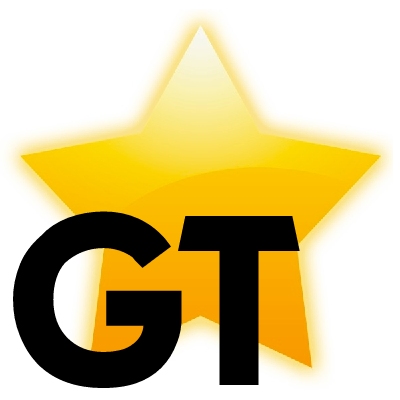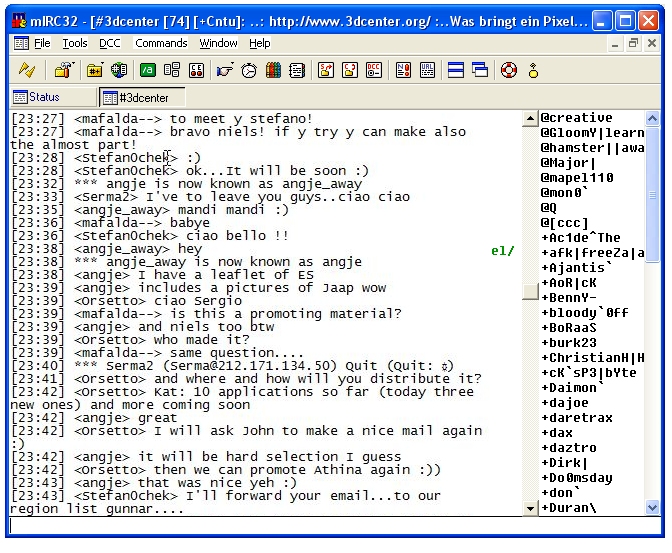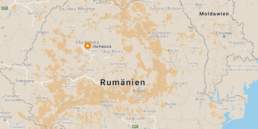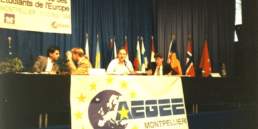Do you know Gopher, IRC or BBS? These were communication or information tools from the early ages of the Internet. AEGEE used them all, starting in 1988. Six years later, Matthias Hinnah from AEGEE-Aachen wrote a fascinating article how the use of e-mails spread, how the first mailing lists were created and the first webpages made. You’ll find it below.
“AEGEE goes Cyberspace” or “From Giovannetti to Merker”
by Matthias Hinnah, Aachen, OneEurope Magazine No.5 (1994)
Today one could hardly imagine AEGEE existing without the conveniences of wide area (computer) networks (WAN). E-mail, Ftp, Gopher, IRC, and recently WWW are the abbreviations that seem to be a magic key to an unknown world. One can easily feel left over if (s)he is not familiar with at least one of them. That was not always like this. The first attempts to use computer technology for communication in AEGEE were made by AEGEE-Delft already in 1988. They tried to establish a BBS (Bulletin Board System) for AEGEE. Some remains of those efforts can still be seen in the office in Delft: One or two files in the shelves still show that they were originally entitled BBS. Unfortunately computer technology in the field of WAN was not yet enough developed to be accessible to almost everybody as it is today.
A broader audience in AEGEE was confronted with the subject of computer communication on the Agora in Paris in May 1990 for the first time. There Giuliano Giovannetti from Milano presented something called EARN. According to him exchange of information should be possible free of charge via this computer facility. It seemed very promising. Giuliano also distributed a sheet of paper where EARN was explained as European Academic Research Network.

Some weeks later an account on a Vax computer was installed for AEGEE-Aachen and the big adventure could begin. At that time only six other antennae could be reached via EARN: Bonn, Delft, Heidelberg, Karlsruhe, Milano and Rotterdam. Shortly afterwards more and more antennae got their own computer accounts. Although not all of them were EARN accounts they were referred to as such. On the Agora in Amsterdam in April 1991 a first list was set up showing which antennae had accounts like that. It was only in mid-1991 that the correct term “e-mail” (electronic mail) was introduced in AEGEE. The network which made this communication possible was and still is the Internet, a network of computer networks. It turned out that EARN is only one subnet of the Internet; one which is used less and less, newly established computer links in Central and Eastern Europe which were a great opportunity for AEGEE could not be reached.
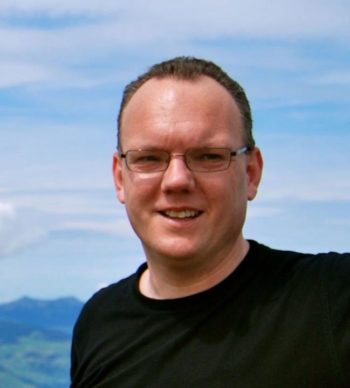
Having switched to the Internet the next major step was the discovery of Ftp (file transmission protocol). Till then only the exchange of messages between a sender address and one or more receiver address(es) had been possible. The content was in most of the cases personal greetings, the Calendar of Events or the list of e-mail users. Then Dinu Gherman from Karlsruhe had the opportunity to open a special AEGEE directory on the Ftp server of the ASK (Akademische Software Kooperation) at the beginning of 1992. That offered the possibility to store files containing AEGEE information publicly accessible that then everybody could copy to his/her computer account via Ftp whenever (s)he felt liked.
In the meantime the so-called EMUG (E-mail User Group) had been set up in AEGEE. Some people wanted to have an E-mail Working Group, others said that the subject e-mail would not justify the erection of a working group. Thus the compromise was the EMUG. All antennae and individual AEGEE members became automatically member of the EMUG as soon as they showed their interest by giving their address to someone from the EMUG. Together with address changes due to technical developments that led to a rather high fluctuation on the EMUG list that was sent monthly.
It was again Dinu Gherman who had the idea of using a program to keep the list of e-mail users updated. Again with support from ASK he provided a first list server for AEGEE. For about one year that program was hardly used. This was due to several reasons: The server’s address was difficult to reach via the Internet, only few addresses were subscribed to the list (mainly from Karlsruhe, Konstanz and Aachen) and hardly anybody knew about the possibility of sending messages to that list to be sent to all subscribers. The stress was put on the list of subscribers as possible replacement of the hand-made EMUG list. That only changed when in mid-1993 the list server got a new, better accessible Internet address and a new, more efficient list server software was installed. Now the possibility to let the list server send one’s message to all subscribers became the main attraction. At the same time John Stienen from Eindhoven as E-Mail Co-ordinator of AEGEE had been very successful in gathering antennae and individual members reachable via e-mail. The number of list subscribers could thus grow steadily. To show how the volume of messages sent via the list server exploded a simple look at the archives of the list AEGEE is enough. In the beginning one archive’s file was enough to store all contributions of several months. Today even a single monthly archives file is much bigger. The most interesting discussions so far were those about the future of AEGEE in autumn 1993 and about the conflict between Greece and Macedonia in spring 1994.
Still in 1993 John Stienen introduced another Internet application into AEGEE: Gopher. Like Ftp that program allows to access files that are stored publicly on a server. The difference is that this is not limited to one server at a time. All servers are connected with each other and the files do not have to be copied to your own account first but are displayed directly on the screen. This allows information searches via the Internet throughout the whole world and corresponds to the decentral structure of the organization of AEGEE. One main AEGEE Gopher has been installed in Eindhoven from which several Gopher texts of other antennae as well as other Internet facilities as Ftp or IRC can be addressed. The disadvantage of decentral data organization is that many different files have to be updated independently. Thus is does not surprise that the information in some Gopher text is very outdated because they were updated the last time two years ago.
Since early 1994 a rather entertaining Internet application has been used in AEGEE as well: IRC (Internet Relay Chat). This program allows direct interactive communication between two or more people at different places like in a telephone conference. AEGEE even has its own permanent channel because John Stienen has been able to set up a robot program that always keeps the AEGEE channel alive even if nobody else is there. It is most interesting to see people from let’s say the Netherlands, Germany, Denmark, Hungary and Croatia discuss together.
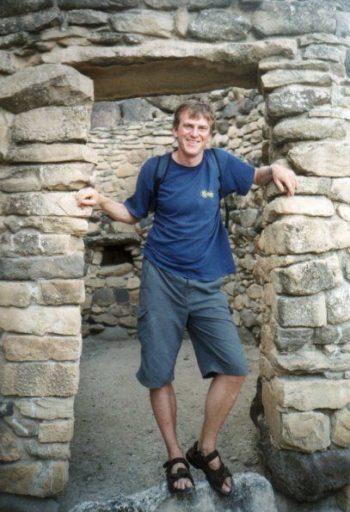
The latest development is that AEGEE has a so-called home page on the WWW server in Konstanz, edited by Jens-Erik Weber. WWW (World Wide Web) is a new system that tries to unify the advantages of all the Internet application that exist till now. Thus you can access Ftp files via WWW as well as Gopher texts. In addition to this it works with graphic displays and the so-called hypertext standard. You just have to select highlighted or underlined words on a page in order to go to another page containing more information about that topic. By this it is also possible to include pictures. At the moment one can have a look at the pictures that Sergey Odinets from Budapest has taken during the Minority Congress in Budapest and the Presidents’ Meeting in Eger at the beginning of 1994 and that he converted into computer readable format. WWW is for sure the most fascinating system on the Internet and one can think of many applications for AEGEE.
The disadvantage, however, is that WWW requires not only an Internet access but a graphic terminal as well which only few antennae or AEGEE members have at their disposal at the moment. For the time being people having an Internet access but no graphic terminal can use special WWW client programs that display the texts only, which is still better than nothing. But time does not stand still. More and more people will have graphic terminals as well. Who could imagine some years ago that today the majority of AEGEE antennae has the possibility to use e-mail? What could underline the development better than the fact that for a few weeks even our well-known Michael Merker has got an e-mail address and uses it eagerly?
Computer technology has established its place in the communication of AEGEE. In the Internet one of the aims of AEGEE has been achieved already: National borders do not exist anymore. Distance and time are no problem for computers. In future computer technology will play an important role in the internal as well as the external communication of AEGEE. This is also demonstrated by the fact that some weeks ago an e-mail hot-line was opened (aegeeint@ask.uni-karlsruhe.de). Via the hotline AEGEE locals and members can ask computer experts for help if they have problems using any of the Internet applications.
AEGEE’s presence in cyberspace:
- AEGEE-Europe: aegee-euro@ask.uni-arlsruhe.de
- Mailing list: aegee@ask.uni-karlsruhe.de (discussion forum)
- Anonymous FTP: askhp.ask.uni-karlsruhe.de, directory “pub/aegee”
- IRC: channel #aegee
- Gopher: gopher.tue.nl, Path=1/faculteiten/AEGEE/Europe
- AEGEE-Europe: http://www.uni-konstanz.de/studis/aegee/
- OEM: http://www.informatik.rwth-aachen.de/AEGEE/oneEurope/
Related Posts
2nd February 2017
Learn the rules first
I was recently quoted as saying, I don't care if Instagram has more users than Twitter. If you read the article you’ll note there’s a big “if” before my not giving of said shit. Numbers are important. Number of users is important. So are lots of other things. Different services create value in different ways. Trust your gut as much (or more) than the numbers. Figure out what matters and build something good.
